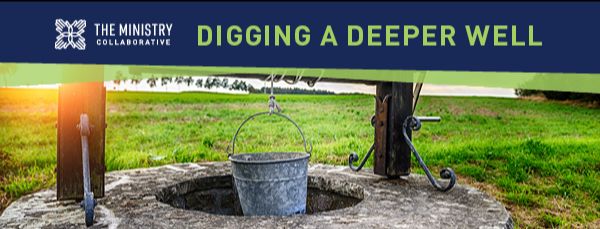Today, we take you to the NBA three-point line. We tend to stay away from sports analogies, but this one is less about basketball and more about risk, efficiency, change, and the development of new skills.
The three-point shot was introduced to NBA games in 1979, having been imported from the ABA (which started using it more than a decade before, prior to its merger with the NBA).
The thing about the three-point shot is that, upon introduction, it was considered grossly inefficient, because so few players could do it well. And yet, as a fascinating Planet Money podcast on “The Science of Hoops” reminds us, over time coaches and players came to prize and pursue its efficiency, and that changed the nature of the game.
Every team – or organization, or ministry – has to learn to be efficient with finite resources. In a basketball game, the number of total shots a team can take is finite. You are only going to get so many “trips down the floor.” Efficiency matters in the need to yield the most points for the most shots. And three points per shot is more than two points per shot (we know, this incisive analysis is why you read Digging a Deeper Well…). But it’s not just a little more – it’s fifty percent more.
It took a new generation of players and coaches – or, players and coaches willing to be retrained – to get prepared to take advantage of the fifty-percent bounty of the 3-point shot. But in that evolution, the 3-pointer went from being a gimmick to becoming the heart of the game.
There remains risk in trying the longer shot, but the yield is worth the risk – if you have prepared the team to seize the opportunity and the benefit.
At the heart of this story is a fundamental economic insight. In a world of finite resources, the principle of efficiency challenges us to use those resources to yield the highest value possible. And yet the pursuit of efficiency will involve risk, and change, and may even reshape the game itself.
In this moment, for churches, one of the most finite resources is – suddenly, or so it seems – face-to-face contact. (Face-to-face contact was probably always a highly finite resource, but the pandemic has forced us to pay much closer attention to that fact.)
We invite you to think, then, about your use of that resource. What is the value you are seeking to create through face-to-face contact at this time? And what is the most efficient use of face-to-face contact for the highest yield of that value?
Can you think of a decision made for the sake of efficiency in your congregation in recent history? What was the conversation about that decision like? Were there risks? Has the decision yielded benefits over time?
Is there anything your congregation has undertaken that you expected to be grossly inefficient but which ultimately yielded significant value?
Thinking about face-to-face contact right now as an especially limited resource, what is the most efficient use of that resource for you as a congregation? What is the value you are trying to produce with it and what is your very best use of it?








No Comments